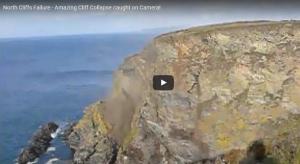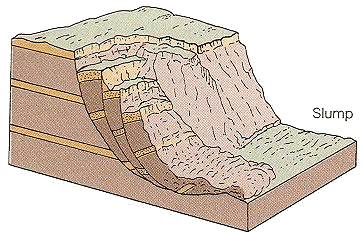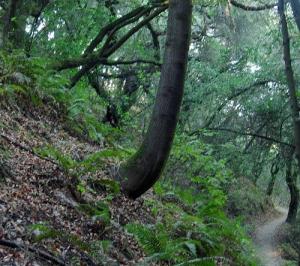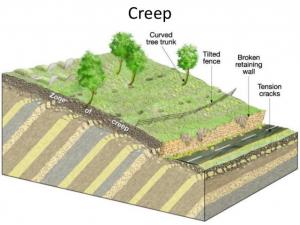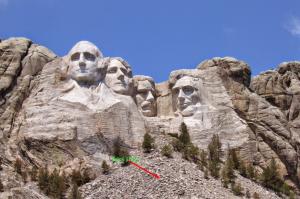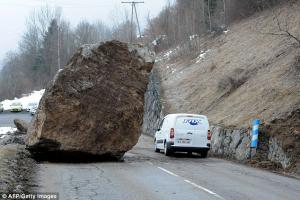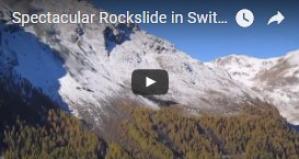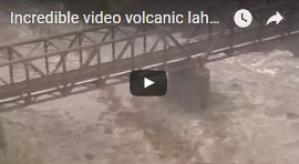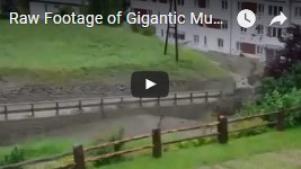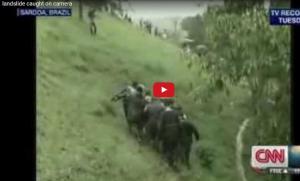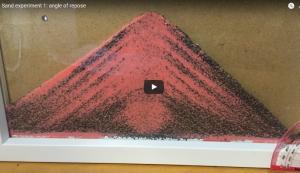Erosion by Wind, Ice and Gravity
Section 1
Daily Dose of Destruction
Using the reading in this section as well as the internet, complete the following assignment.
If you are a student at Snowflake, Holbrook or Heber click here to access the SUSD5 Student Version of the Mass Movement Research assignment.
You can purchase this activity at Teacher Pay Teachers for $0.65 cents.
Weathering is the process of breaking rocks into sediment while erosion is the process that wears away this sediment and other materials and moves them from one location to another. Agents of erosion include gravity, glaciers, wind, and water. Erosion only occurs when these agents have enough energy. The moment agents of erosion lose their energy and momentum they deposit their load. This process is known as deposition. The load is what the agent is carrying. As agents of weathering lose their energy, the heavier sediment is dropped. As the energy is lost, gravel, then sand, then silt, and then clay are deposited, due to their respective masses. Think back to the soil type lab.
Mass movement, sometimes referred to as mass wasting, is what we call the movement of surface material due to gravity, water, wind, and ice. There are five main types of mass movements: falls, creep, flows, slides, and slump.
Slump occurs when soil and rock slip downslope in one large mass. It happens when water penetrates the upper layers of a landmass, but doesn't penetrate the lower layers causing the ground to move outward and on top of the lower layers. Evidence of a slump having happened is upturned curved scars on the side of a hill or bank of a river. Earthquakes can also cause slump as the ground is shaken, and the top layers can fall and slide out over top of the bottom layers. Below are some images demonstrating slump.
Creep happens when sediments slowly move downhill. This one is easy to remember because the sediment creeps downhill. You can tell creep is happening when you see power lines, trees, and fences, ending upcurved, or tilted.
When rock falls, crumbles, or rolls quickly downhill we call it a slide or a fall, and are commonly called landslides. These two types of mass movement happen in mountainous areas where the Earth contains steep cliffs and mountain slopes. You can easily tell that a landslide has happened when you see rocks and other sediment piling up at the base of a slope or mountain. This pile of rock at the base of a slope is called talus.
|
|
|
Flows are the most devastating type of mass movement. Imagine a thick wall of mud, rock, and debris coming toward you at high speeds, moving like a river of water, except in this case swimming would be nearly impossible. Flows happen due to an accumulation of weathered material in dry areas. Piles of debris and sediment are present. The soil is loose in this area is loose, so when it rains, the water has an easy time penetrating it, and then gravity forces all of this sediment down the hill where it picks up other sediments on its way. When the sediment hits the base of the slope it spreads out in a conical shape called an alluvial fan.
A special type of mudflow called lahar happens when a volcano begins to heat up snow-filled slopes and the ice and snowmelt. This causes very quick and dangerous mudflows that can travel many miles destroying anything in the way.
|
|
|
|
|
Section 2
Daily Dose of Destruction
Mass movement or mass wasting happens after the angle of repose has been breached. The angle of repose is the steepest angle at which a sloping surface made out of a specific material is stable. The moment the angle of a slope has become too steep, due to circumstances like undercutting and erosion, the slope with that material will collapse until it is stable once more. Once a material like sand has hit the angle of repose, a mass movement event is inevitable. All it will take is a slightly steeper angle and then BOOM, the slope collapses. Adding a solvent like water can change the angle of repose as well. Below is a video experimenting with two types of sand to demonstrate that the angle of repose is different based on the material types.
In this next lab, you are going to calculate the angle of repose of a type of sandy soil.
If you are a student at Snowflake, Holbrook or Heber click here to access the SUSD5 student version of the Angle of Repose Lab.
Purchase this activity at Teachers Pay Teachers for $0.75 cents.










